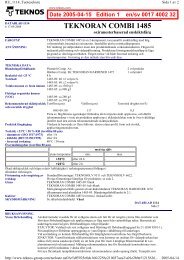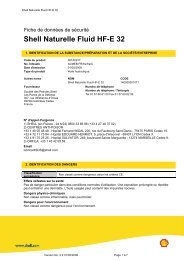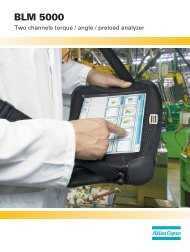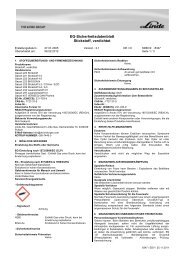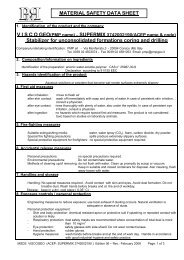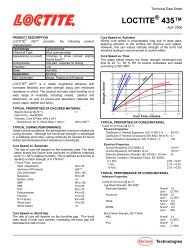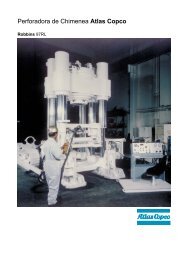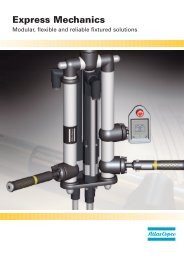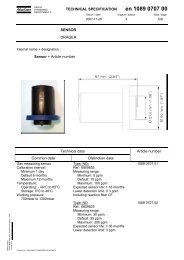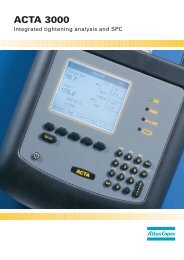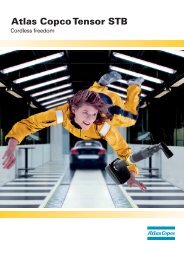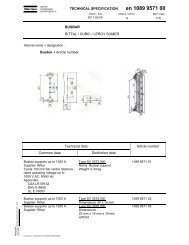Ergonomics - Atlas Copco
Ergonomics - Atlas Copco
Ergonomics - Atlas Copco
Create successful ePaper yourself
Turn your PDF publications into a flip-book with our unique Google optimized e-Paper software.
108<br />
hole of the wheel are wider than those of the<br />
spindle, the production of wheels and spin-<br />
dles offers potential for reducing vibrations.<br />
Another source of vibration is the work<br />
process, i.e., the interaction between the<br />
machine and the material it works on. A<br />
percussive tool, such as a riveting hammer,<br />
may initiate vibrations in the structure it<br />
is being used on. These vibrations will be<br />
transmitted back into the machine.<br />
Removing oscillating forces by design<br />
It is important to identify oscillating forces<br />
at an early stage in the design process. In<br />
the following example the objective is to de-<br />
sign a scaler for removing slag from welded<br />
parts. For this task a forward and backward<br />
motion was needed. The presence of oscillat-<br />
ing forces is obvious and the design concept<br />
is that the forces should counteract each<br />
other. The principle is based on two oppos-<br />
Fig. 3.15 Two opposing masses reduce the<br />
oscillating force on the machine housing,<br />
in turn reducing vibrations.<br />
ing masses. The masses rest on springs that<br />
are clamped against the machine casing.<br />
When the control is opened, the space<br />
between the two masses is filled with com-<br />
pressed air. Pressure on the trailing mass<br />
creates a force that accelerates it backwards.<br />
The leading mass is forced forwards in the<br />
same manner. The amplitude of these two<br />
masses depends on the spring force acting on<br />
the masses, plus the inertia of the mass.<br />
As shown in the figure, the trailing mass<br />
is larger than the leading mass. Thus, the<br />
leading mass has a larger amplitude than<br />
the trailing mass. The trailing mass forms a<br />
cylinder for the leading mass and there are<br />
outlets located in the front part of this cylin-<br />
der. During forward movement of the leading<br />
mass, and when it passes the first of these<br />
outlets, the volume of compressed air be-<br />
tween the masses starts to vent. At the same<br />
time, the flow of compressed air into the<br />
space is throttled. Due to the<br />
spring force, the masses now<br />
begin to accelerate towards<br />
each other. The space is sealed.<br />
Air pressure is built up again<br />
and the cycle is repeated. The spring<br />
forces, masses and degree of throttle are all<br />
calculated so that the resulting spring force<br />
on the casing is minimized.<br />
The declared vibration is below 2.5 m/s 2 .



